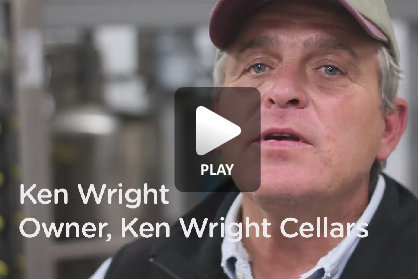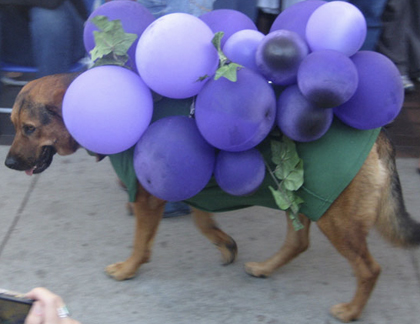Dr Vino's wine blog
wine talk that goes down easy
From the annals of winemaking: flash detente
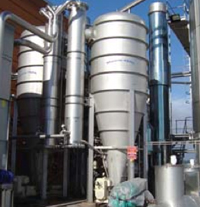 St. Helena resident John Gillespie tweeted the other day: “Trade and consumer alert – bad harvest weather in CA meant lots of grapes (Napa Cabs included) went through “flash détente” machines.” Since I am a political science junkie, I thought SALT II had finally made it to Napa!
St. Helena resident John Gillespie tweeted the other day: “Trade and consumer alert – bad harvest weather in CA meant lots of grapes (Napa Cabs included) went through “flash détente” machines.” Since I am a political science junkie, I thought SALT II had finally made it to Napa!
But instead of laying down weapons, some vintners appear to be ratcheting up technology as Mother Nature dealt them a third consecutive growing season that was relatively cool. Wines & Vines, a trade publication, ran a story last year on Flash-Détente, which roughly translates as “instant relaxation.” They report that by heating the grapes to 185ºF and then sending them to a vacuum chamber to be cooled, the the technology increases extraction from red grapes while minimizing bitter seed tannin and pyrazine (vegetal) odors. The finished wine also has a darker color. Because some of the water content of the grapes has been vaporized, the pre-fermented juice (called “must”) has a higher sugar content, which will result in higher alcohol or will be adjusted down in some way. Developed in France, the first Flash-Détente machines arrived in California in 2009.
Here endeth today’s Flash class on winemaking.
Neptune, cellarmaster
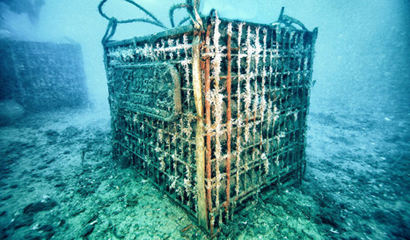
Into the abyss. You might think that’s the metaphorical direction of our country these days, with the economy on the shoals, an earthquake and hurricane rattling the east coast, and the great Steve Jobs retiring. But it’s actually where an Italian sparkling wine maker is storing wine.
The NYT had a good story about Piero Lugano of Bisson who dunking his wine a couple of hundred feet under the Italian sea for a year’s aging called “Abissi.” Here’s his reasoning:
“It’s better than even the best underground cellar, especially for sparkling wine. The temperature is perfect, there’s no light, the water prevents even the slightest bit of air from getting in, and the constant counterpressure keeps the bubbles bubbly. Moreover, the underwater currents act like a crib, gently rocking the bottles and keeping the lees moving through the wine.â€
It’s an interesting idea (even Cristal has tried it) that evokes all those amphorae strewn on the floor of the Mediterranean, even if they weren’t put there for that purpose. For wineries that would have to rely on climate-controlled cellars, this storage would be a greener option if they get their power from non-renewable sources.
I can’t help but wonder though…is it a marketing gimmick? It gives the wine a great story and wines with great stories generally fetch higher prices for wines. If you look at a video, the bottles are lowered into the sea in large cages–is it really possible that the ocean swells could rock those? The article doesn’t say which type of closure they used but if it was a crown cap, as is common for bottle fermentations, doesn’t that have an oxygen transmission pretty close to zero anyway? And I’m not sure what to make of the comment about atmospheric pressure on bubbles given that the undersea pressure is probably greater than that in the bottle of spumante. But anyway, it’s a fun story. If you have thoughts about the effectiveness of giving Neptune the keys to the cellar, hit the comments.
Flowering at Hirsch Vineyards
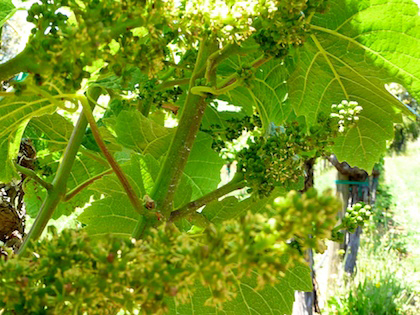
Last Thursday, I stopped by Hirsch Vineyards where Jasmine Hirsch told me that flowering was the second latest–and the latest was just last year. Given this year of wacky wine weather, I thought it was worth asking the question: What is flowering and how does a late flowering affect the finished wine?
To further reproduction, the vines burst flowers that become bunches of grapes. The period between flowering and the arrival of the grapes (called “fruit set”) is a tenuous time when severe weather can damage the emerging berries, so the shorter the period between bloom and set, the lower the risk to the harvest’s quality and quantity. Jasmine said that in 2005, they had an early bloom and a late set with heavy rains in between, which reduced the yields to a half a ton per acre, or 20% of the normal yield. By contrast, even though last year was their latest bloom, the fruit set relatively fast and the window of potential peril closed quickly. (And the wines in the barrel appear to be evolving well–more on that later.) Whether that will be the case again this year, nobody knows. But the late bloom did at least avert the storms of late May and early June that may have caused “shatter” in some other, warmer Northern California areas that had already had bloom. However, a late set may mean a late harvest, with its attendant risks. Mother Nature is capricious and, despite the efforts of vineyard owners like the Hirsches, ultimately runs the show. Read more…
“Petrol” is a flaw in young Riesling: Olivier Humbrecht
 The petrol note sometimes found in young Riesling is a flaw according to Olivier Humbrecht. And we lack a better vocabulary for the petrol note that many Riesling aficionados cherish in older bottles.
The petrol note sometimes found in young Riesling is a flaw according to Olivier Humbrecht. And we lack a better vocabulary for the petrol note that many Riesling aficionados cherish in older bottles.
The winemaker at Zind-Humbrecht in Alsace who makes 40 different wines a year commented in New York last week that the petrol note can be symptomatic of three things. The first is harvesting under-ripe grapes. Riesling needs 110 to 120 days to ripen, he says, and harvesting the grapes too early can lead to an undesirable aroma. Similarly, he says that machine harvesting can lead to off-aromas in the wine, generally called “petrol.”
Second, Riesling is prone to reduction, a condition devoid of fruit aromas, and this can be mistaken as “petrol.” Instead, it is simply not desirable. Winemaking decisions such as making the wine in airtight environments such as stainless steel or even old oak can, poor use of sulfur, or leaving the wine on the lees can make it prone to reduction. A good winemaker should be able to see these problems arising and take steps to mitigate them.
Third, there is a desirable form of “petrol” in mature Riesling but Olivier says the term is “ill-chosen.” Given the choice, he would describe an earthy character as truffle instead of mold, as it’s a more desirable to choose term. Similarly, he prefers to think of mature Riesling as having a character of wet stones, minerals, sea air, or iodine, all of which are more pleasurable than the bottom of a diesel tank.
“I hope to God that nobody would think that young Rieslings smell like petrol!” Wine drinkers should trust their gut instinct and if the wine’s aromas are off-putting, then it is bad. Another way to tell if it is reduction: drop a copper penny into the wine (or swirl a copper wire) and see if the off-aromas disappear and fruit reemerges. Or try decanting it.
Talking Chenin Blanc with Ken Forrester of South Africa
 Ken Forrester likes Chenin Blanc. Just don’t call it Steen.
Ken Forrester likes Chenin Blanc. Just don’t call it Steen.
His Stellenbosch vineyards, four miles from the ocean, are planted 50% to Chenin Blanc, also known as Steen locally to people other than Ken (he finds the local name too confusing.) In his opinion, the best Chenin needs cool and sunshine, which may sound like a paradox. But Ken says that’s what happens in the best years in the Loire, which is often cool, and in South Africa, which has abundant sunshine and a few cooler vineyard sites. Read more…
Waterlogged or machine concentrated? Ken Wright takes a stand
Ken Wright of Ken Wright Cellars has a video interview on the tech blog Gizmodo. Why would this graybeard of the Oregon wine industry and godfather to the biggest little wine town in Oregon (Carlton) be talking to a tech blog? He discusses using a vacuum concentrator to reduce unwanted dilution in juice after late-season rains, which can make the grapes waterlogged prior to harvesting. (Depending on desired ripeness, picking before the rains may or may not be another option for avoiding bloated grapes.) The device, imported from Italy, essentially reduces the wine to below atmospheric pressure, allowing for low temperature boiling thereby removing the excess water from the tank and leaving a more concentrated juice behind. Gizmodo mentions that there are at least a half-a-dozen other vacuum concentrators in Oregon.
Wright elaborates on why the machine is a good thing: “We spend a year of our life farming. It seems really silly to accept something sub-standard when you can make a difference, when you can do something to heal the issue.”
I give Ken Wright a tip of the ol’ winemaker’s baseball cap for detailing a part of his winemaking practices: What happens in the cellar is not discussed often enough in detail (indeed, even his own web site espouses minimal handling in the cellar).
What do you think, in general–would you rather have a machine-concentrated wine from a waterlogged vintage or the wine that mother nature intended?
Your carmenere ran over my dogma [natural wine]
I’ve wanted to sell the above line to Wines of Chile for some time. But I found another use for it: this article on natural wine by Mike Steinberger on Slate.com. It really advances the discussion. An excerpt:
Yet when you strip away all the rhetoric and dogma about “natural wines,” what are you left with is essentially just a slogan, used by a group of people to champion some wines that happen to please their taste buds and/or sensibilities…I think “natural” advocates ought to ditch the “natural” label, which is hopelessly tendentious and polarizing, and should instead put the focus where it really belongs, on individual wines and winemakers…Call them good wines, call them distinctive, soulful, or funky wines—just don’t call them natural wines.
Holy spritz! Water delivers flavors
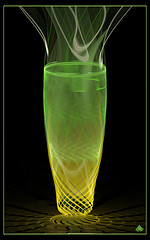 In a NYT story entitled, “To Enhance Flavor, Just Add Water,” Harold McGee explains–perhaps counterintuitively–that adding water to (alcoholic) beverages amplifies their flavors and aromas. To the tape:
In a NYT story entitled, “To Enhance Flavor, Just Add Water,” Harold McGee explains–perhaps counterintuitively–that adding water to (alcoholic) beverages amplifies their flavors and aromas. To the tape:
How can water reduce one sensation and amplify another? Both alcohol and aroma molecules are volatile, meaning they evaporate from foods and drinks and are carried by the air to the odor receptors high up in the nasal cavity.
Aroma molecules are also more chemically similar to alcohol molecules than they are to water, so they tend to cling to alcohol, and are quicker to evaporate out of a drink when there’s less alcohol to cling to.
This means that the more alcoholic a drink is, the more it cloisters its aroma molecules, and the less aroma it releases into the air. Add water and there’s less alcohol to irritate and burn, and more aroma release.
Given that there’s a notion that “alcohol delivers flavors” in wine, this is a useful contribution to the discussion. Read more…
